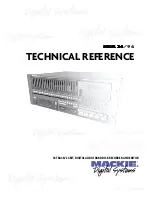
Introduction 19
Terminal Server Features
Software
This section describes the supported software features available.
Accessing the Terminal Server
All Terminal Server models can be accessed through any of the following methods:
z
Easy Config Wizard, an easy configuration wizard that allows you to quickly setup the Terminal
Server in a Windows environment
z
DeviceManager, a fully functional Windows Vista/XP/Server 2003/2000
configuration/management tool
z
WebManager, a web browser (HTTP/HTTPS) option for configuring/managing the Terminal
Server
z
Menu, a window-oriented menu interface for configuration and user access
z
CLI, a Command Line Interface option for configuration/management and user access
z
SNMP, allowing remote configuration via SNMP as well as statistics gathering
z
DHCP/BOOTP, a method of automatically updating the Terminal Server
General Features
Basic software features are available on all Terminal Server models.
z
IPv6 support.
z
Support for TCP/IP and UDP protocols including telnet and raw connections.
z
Printer support via LPD and RCP.
z
Virtual modem emulation.
z
‘Fixed tty’ support for several operating systems using the BLACK BOX
®
COMredirect utility.
z
DHCP/BOOTP for automated network-based setup.
z
Dynamic statistics and line status information for fast problem diagnosis.
z
Multisession support when accessing the Terminal Server from either the serial port or the
network.
z
Modbus master/slave/gateway support.
z
Ability to disable services (for example, Telnet, COMredirect, Syslog, SNMP, Modbus, HTTP)
for additional security.
Security
The Terminal Server security features can include (depending on your Terminal Server model):
z
Supervisory and serial port password protection.
z
Ability to set serial port access rights.
z
Ability to assign users access level rights to control their access.
z
Trusted host filtering (IP filtering), allowing only those hosts that have been configured in the
Terminal Server access to the Terminal Server.
z
Idle port timers, which close a connection that has not been active for a specified period of time.
z
Ability to individually disable network services that won’t be used by the Terminal Server.
















































